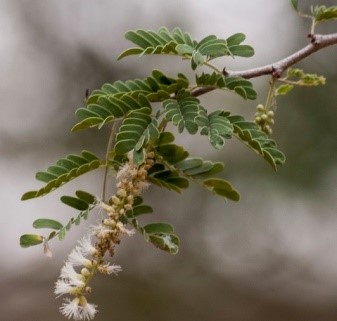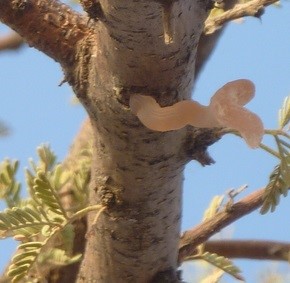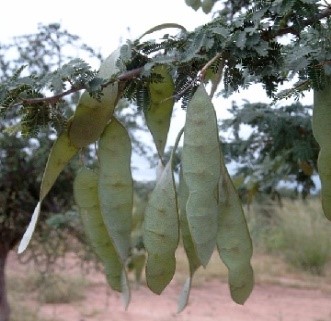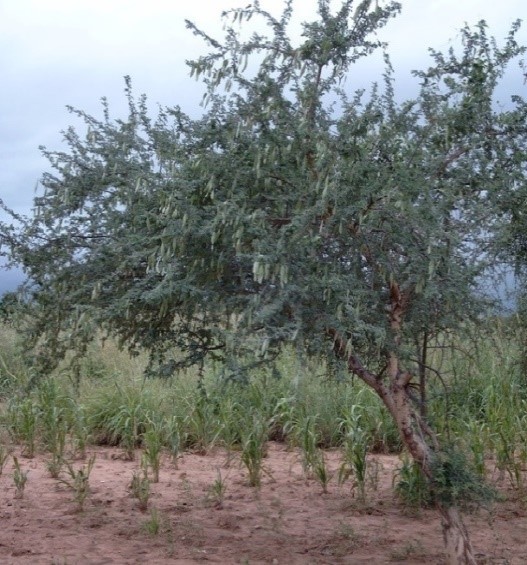Trees
Acacia Senegal (L.) Wilid
Acacia Senegal (L.) Wilid
Description :
Commonly a small, thorny deciduous shrub that will take tree form with a height up to 8 m. The thorns typically occur in threes, with the central ones curved. The leaves are compound 2 to 5 cm long the bark is smooth. Pale greenish grey and peels off in flakes. The flowers are fragrant, white to pale yellow growing in bunches and occur between August and December depending on geographic location. The pods are 5 to 7 cm long and mature between January and March. It can be reproduced both from seed and by vegetative means. It is best reproduced from seed or planted seedlings. Pretreatment of seed with an overnight soak in water will increase germination. It is relatively slow growing, with a life span of 25 to 30 years. Yields of 1 to 4 m3/ha/yr at 25 years of age, depending on the site, have been recorded. This tree is adapted to a variety of arid sites and soils. It is aggressive and is easily established. It coppices readily and under certain conditions it can become a serious problem because it is difficult to eradicate. In South Africa and Australia, it is considered a "noxious weed” and polices have been established to eradicate it and prevent its further introduction. Sapwood yellowish white and heartwood is black having coarse texture. The wood is heavy and very strong, with a calorific value of 3200 kcal/kg.
Distribution :
This tree is native to Pakistan and is found in lower Sindh and Balochistan. It has been planted extensively throughout Africa, Central and South America, the Subcontinent, and other parts of the world. An intolerant, drought resistant tree that grows on a variety of very harsh sites, usually below 1700 m in elevation. It will not tolerate water logging and requires precipitation between 200 to 800 mm/yr. It prefers an arid to semi-arid, hot sub-tropical, maritime climate with a temperature range of -4 to 48°C. It can tolerate periods of drought up to 8 to 10 months. Mature trees are susceptible to termite attack during periods of stress.
Uses :
It is a good nitrogen fixer and has potential as an erosion control tree
on very harsh sites. With care this could be a useful farm forestry tree. Young
trees need protection from grazing. Fodder, fuel, gum (food, beverages), land
stabilization, nitrogen fixing, poles, and agricultural implements.



